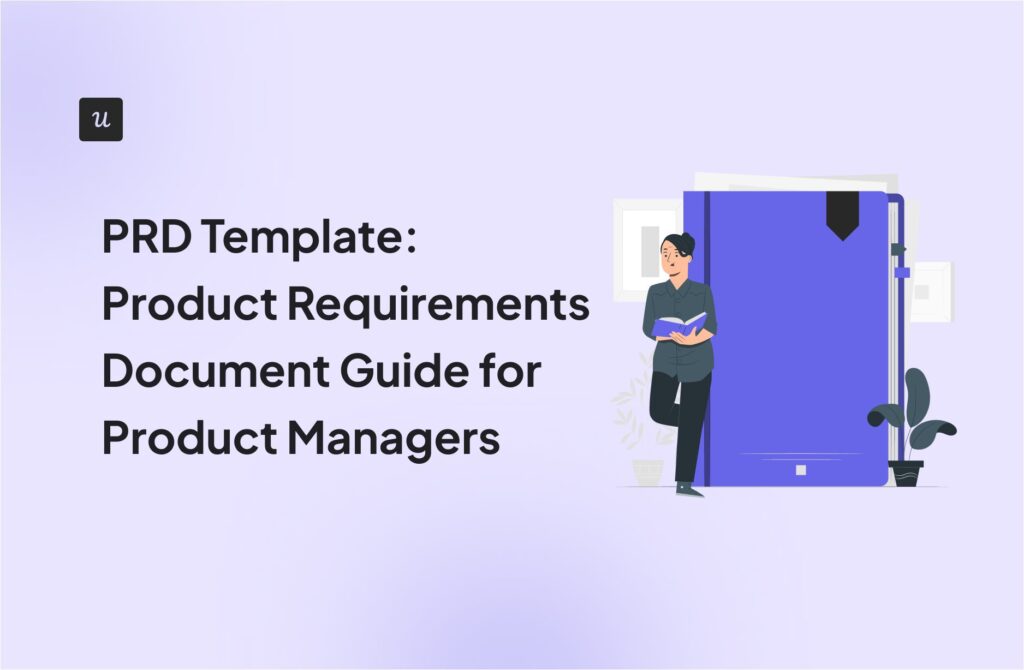
You Don’t have a Prioritization Problem, You have a Strategy Problem by Ant Murphy
Are you always struggling to decide which features to prioritize and which to abandon?
According to Ant Murphy, a product manager coach and founder of Product Pathways, the reason is simple: You don’t have a prioritization problem; you have a strategy problem.
Ant discussed the challenge in depth in his talk at this year’s Product Drive summit hosted by Userpilot.
In this article, we cover the key takeaways from his presentation. To help you create a successful product strategy and align your prioritization efforts.
Try Userpilot Now
See Why 1,000+ Teams Choose Userpilot

What do companies get wrong about prioritization?
Having worked with product leaders from dozens of companies, including Atlassian, Google, Tripadvisor, Miro, and Microsoft, Ant has discovered that teams use outdated prioritization frameworks.
What makes them so obsolete?
“Value-based prioritization”
You often hear that companies prioritize their features based on value.
Sounds reasonable, doesn’t it?
Well, yeah, but how do you define “value”? Is it business value? Customer value, maybe? Retention? Risk? Costs? Or tech debt, perhaps?
As there are so many dimensions, the prioritization process is fairly complex. You score each feature based on individual criteria and use complicated formulas to arrive at a final priority score. Which often seem random.
“The blessing game”
Part of the problem with prioritization is that teams don’t have the autonomy to call their shots.
Instead, they must escalate the prioritization decisions to the senior leaders or committees for approval. In other words, every decision needs a blessing from the top.
Sound familiar? I bet it does.
Treating prioritization as an isolated activity
Ever come across the “Vision-Strategy-Roadmap” pyramid?
The idea is that the vision feeds into the strategy, which then informs the product roadmap or backlog.
For many businesses, prioritization is a bottom-level activity at the roadmap or backlog level.
That’s one mistake because prioritization decisions should happen throughout the pyramid.
The second one is even worse: Many companies lack a product strategy. As a result, prioritization happens in isolation, without anything solid to anchor it to.
So, what companies consider a prioritization problem is, in fact, a strategy problem.
What’s a strategy?
Ant defines it as “an integrated set of choices,” which was inspired by Roger L. Martin and Richard Rumelt. So, at its core, a strategy is about making deliberate choices. For example, which market segments to target or which growth model to use.
For every choice you make about what to do, you implicitly decide not to do other things.

Tesla’s case study: How the company’s strategy guided prioritization
Let’s use Tesla to illustrate how ‘integrated choices’ work in practice.
Tesla’s vision is to enable the transition to sustainable energy with mass-market electric vehicles.
Why did they start with the Roadster, a high-end product for the select few?
Elon Musk realized early on that building an affordable electric car required significant R&D and capital. Tesla prioritized the Roadster, targeting luxury buyers who would pay a premium to generate revenue to fund further development.
This phased approach allowed Tesla to gradually lower costs and expand its market reach. The result? Tesla Model 3 and Model Y — affordable vehicles aligned with its mass-market goal.
How to create a product strategy in 4 steps?
There’s no one best way to create a product strategy. There’s no template that you can fill in. Strategy development is a process that allows you to make those integrated choices.
1. Gather inputs
The first stage is all about gathering the data you need to make informed decisions, focusing on:
- Market State: Current market trends, competitor actions, and emerging customer needs.
- Business State: The company’s financial health, resources, and strategic priorities.
- Product State: The current state of the product, including strengths, weaknesses, and areas for improvement.

How do you gather the insights?
Here are a few choices:
- Industry reports.
- Competitor analysis.
- Market research.
- Social media monitoring.
- Financial reports.
- Product analytics.
- User feedback surveys.

2. Create narratives
Once you have the data, analyze it and interpret it to form narratives that give context to your decisions.
Narratives aren’t just about the current state but also about what you believe will be true in the future: the market direction, technology development, and customer behavior.
For example, Elon Musk believed that electric vehicles were the only path to sustainable transportation and that, through sufficient R&D, he could lower the costs to make them accessible.

3. Map out paths
Next, it’s time to map out the different strategic paths that could help you realize your product vision.
For each path, consider factors like target market, funding requirements, and alignment with company strengths. These are your strategic “levers” — options you can pull to advance toward your goals.
For instance, Tesla had three main paths to choose from: start with a high-end model and work down, enter the market with an affordable car, or focus on mass-market vehicles immediately.

4. Make strategic choices
Finally, commit to a specific path, or in other words, make your bets. For example, who to target, what initiatives to pursue, what areas to avoid, or how to measure product success.
These strategic choices form the core of the strategy and guide your company’s focus and resource allocation.
For example, Tesla prioritized revenue generation over immediate affordability. That’s why they chose to start with a high-end electric car.

Turning strategic vision into reality: Prioritization done right.
Now that you have a product vision and a robust product strategy, let’s see how to use them for prioritization.

Translate strategy into outcomes
The process starts by translating your strategic goals into specific outcomes. This makes it actionable and allows you to track progress.
Teams often use the OKR, or Objectives and Key Results, framework at this stage. If your objective is to dominate the mid-market segment, one of your key results could be “increasing mid-market customer acquisition by 12% within a year.”
If you’re not sure how to define your OKRs, use the SMART framework to make sure they are Specific, Measurable, Achievable, Relevant, and Time-bound.
Next, map out customer problems, needs, and desires aligned with each outcome. And only those.
Narrow down opportunities
What if there’s no direct link between a problem and the outcome? For example, when a customer makes a request that doesn’t align with your high-level goals?
It goes on the back burner. You might bring it back to the top of the backlog when your objectives change.
Removing irrelevant ideas is the start of prioritization within the opportunity space.
Next, you choose the problems to solve based on their impact. So you can focus your resources on what truly drives the strategy forward.
Here’s an example from a FinTech company aiming to grow its home loan offerings.
In this case, the team identified a key customer pain point: long approval times prevented customers from participating in auctions for homes they were interested in. Particularly in capital cities, where most homes sell through auction, the typical two- to three-week approval process was a barrier.
The opportunity was clear: reduce loan approval time to allow customers to bid at auctions on short notice. To narrow down the focus even further, the team chose a specific goal—bringing approval time down to under three days so that customers could attend an auction within the same week.
By zeroing in on this precise issue and timeframe, they could create a targeted plan that directly addressed a major customer need. This approach kept them aligned with their strategic goal of improving satisfaction in the home loan process.
Use experimentation to finalize solutions
After prioritizing customer problems and needs to address, start looking for solutions.
Normally, there’s more than one way to solve the same problem. How do you choose?
Through experiments.
These could include prototype tests early on in the development process and then A/B tests and user testing once the ideas get more advanced.
This may sound like a lot of work. However, if you did your homework at the earlier stages, you should have only a few strong options to test now.
And it’s totally worth it because it helps you avoid wasting resources on ideas that will flop.
Conclusion
Effective prioritization isn’t easy when you have no solid strategy to lean into, and you do it only at the roadmap stage.
In his Product Drive talk, Ant Murphy offered an alternative: start prioritizing from the get-go. When you prioritize at the vision and strategy stage, you create a strong foundation for opportunity and solution prioritization later on. There are fewer of them to tackle, and they are well-aligned with your goals.
Curious how Userpilot can help you gather and analyze customer data to make informed prioritization decisions? Book the demo!






